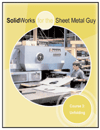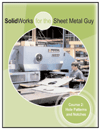Cap Tube Charging
QUESTION:By John West
Chesterfield, Va.
My question involves the proper way to charge a cap tube or fixed orifice metering device. I know that weighing in is the best option. But what if that is not available?
What would be a good subcooling and superheat? And please offer some suggestions on the proper tools to get results. I have seen techs using a pocket thermometer to get superheat readings.
ANSWER:
From Dan Kramer, P.E.
Specialist Grade Member of RSES,
Professional Engineer
If you are charging a new capillary or fixed restrictor system with field-installed lines between the condensing unit and evaporator, you should evacuate to 500 microns or less using a vacuum gauge that reads in microns. I have a little pocket micron gauge — the DV-22 from J/B Industries — that works beautifully. The vacuum should hold without rising more than a couple hundred microns over a few minutes. A continuous rise indicates a leak. A short, sharp rise suggests moisture.
If the factory charge weight is unavailable, I would charge by superheat. In my opinion, the best instrument for superheat measurement is made by Concept Technology. The company is in Hazelwood, Mo., and its telephone number is 314-837-6385. The unit has a built-in computer that stores pressure-temperature charts for several common refrigerants and has plug-ins for most of the new refrigerants. You strap the temperature bulb to the suction line and hook your gauge hose to the suction line tap and read superheat directly.
I wish I had an electronic scale. But because I don’t, I use a bathroom scale and write down the beginning weight of the refrigerant cylinder.
You should hang a thermometer at the condenser air inlet and adjust the entering air temperature to about 95 degrees F by redirecting some warm air off the condenser back to the air inlet.
I prefer to charge to about 8 degrees F superheat with inlet air to the evaporator at about 72 degrees F. That’s pretty cold. That way, under most reasonable operating conditions, the air to the evaporator will be warmer and the superheat will be higher, thereby providing safe operating conditions for the compressor.
When charging is complete, write down the cylinder final weight. Subtract the final cylinder weight from the start weight and write down the charge weight on a sticker you place on the unit. That way, next time, you can just charge the same system by weight.
Remember that most 400 series refrigerants (zeotropes) have to charge in the liquid state. Pure refrigerants like R-22 or -134a can be charged by vapor.
If you are recharging an old system, I would install a line-tap valve on the condenser outlet and monitor the high-side pressure while charging. If you have correctly evacuated before charging, you can be pretty sure you don’t have non-condensibles. However, a plugged or restricted capillary will require you to charge an abnormally large amount of refrigerant before the superheat comes down.
With the high-side pressure and a liquid line thermometer, you should be able to detect subcooling greater than about 15 degrees F. That suggests an overcharge. Should that happen, my preferred practice would be to uncharge back into a recovery cylinder, purge with nitrogen, cut out the cap tube, and replace with a properly sized TXV with a liquid sight glass at its inlet. Evacuating and recharging would be as for a TXV.
Evacuation Level Of 410A
QUESTION:By Bill Smith
Sealed Unit Parts
Allenwood, N.J.
I have a question about the evacuation levels for R-410A/POE oil systems.
American Standard points out, “Proper evacuation to 500 microns will remove moisture from an R-22 mineral oil system. However, evacuation to 500 microns will not sufficiently remove moisture from a system using POE oils such as those used with R-410A.”
What is the suggested evacuation level for 410A systems?
ANSWER:
From Dave Bell
Service Training Specialist
Copeland
Sidney, Ohio
At least one large system manufacturer that utilizes 410A and polyol ester (POE) lubricant says to evacuate to 500 microns. This deep vacuum method is used to evacuate air and noncondensibles, which may include moisture, from the system.
With 410A you must use an approved POE lubricant. One characteristic of the POE is that it is very hygroscopic. This means it has the ability to attract moisture at a high rate. POE also has the ability to hold this absorbed moisture and not release it under a vacuum. The moisture that is trapped in the POE can be removed by the use of the proper liquid line drier. As in any system, multiple drier changes may be required depending on the level of trapped moisture.
Evacuation is important for the removal of air and noncondensibles. Also, use the proper liquid line drier to remove any moisture that may be trapped.
Pulling A Vacuum
QUESTION:By John West
Chesterfield, Va.
My question involves pulling vacuum on air conditioning units. Would a large vacuum pump — say a 35 to 50 cfm unit that you use on a large chiller — be as effective on a small 3-ton system? What would be the appropriate rise in pressure on your gauge or micron gauge to signal that you have a leak?
ANSWER:
From Dan Kramer, P.E.
Specialist Grade Member of RSES,
Professional Engineer
I see no reason why a high-volume vacuum pump could not be used to evacuate a smaller system.
However, in that case — as in any vacuum pump application — there are three basic rules:
The presence of a leak would be indicated not by a given number of microns rise in pressure, but by a continuous rise over a period of time. An immediate significant pressure rise after the shut-off valve is closed might simply indicate some residual refrigerant or air dissolved in the oil, or possibly some moisture remaining in the system.
In that case, open the shut-off and continue the evacuation. When the pressure reaches 500 microns and the valve is shut and the pressure rises only to 600 or 650 microns and then stops rising, I would say the evacuation is complete. If the pressure continues rising, even slowly, I would suspect a leak.
Remember, never to start a hermetic compressor while it is evacuated since that could precipitate internal arcing and a subsequent motor burnout.
Missing Filter-Driers
QUESTION:By Robert Hunter
Via E-mail
I’m a homeowner that had a new central A/C unit installed five years ago. I had to have the outside unit replaced due to compressor failure. The company informed me that there were no driers installed on the old unit. Would this have caused the old compressor to fail?
ANSWER:
From Bill Mosher
Commercial Products Manager
Parker Hannifin Corp.
Lyons, N.Y.
Unfortunately, there is not enough information to conclude whether a missing drier had any impact on the compressor failure. Parker recommends having the compressor sent back to the manufacturer for analysis.
As a filter-drier manufacturer, we always recommend the installation of a filter-drier on an air conditioning system. Some system manufacturers integrate the dryer into their units. Others provide “drop-in” dryers to be brazed within the liquid line upon installation.
Filter-driers are a system protector. They filter out debris, water, and acids. They are designed to protect expansion valves, flow raters, and compressors from the prior mentioned contaminants. However, the lack of a drier on your system may not be the reason for your compressor’s failure.
If you have a technical question, fax it to 847-622-7266 or submit it online on The Hotline page.
Publication date: 04/07/2003





